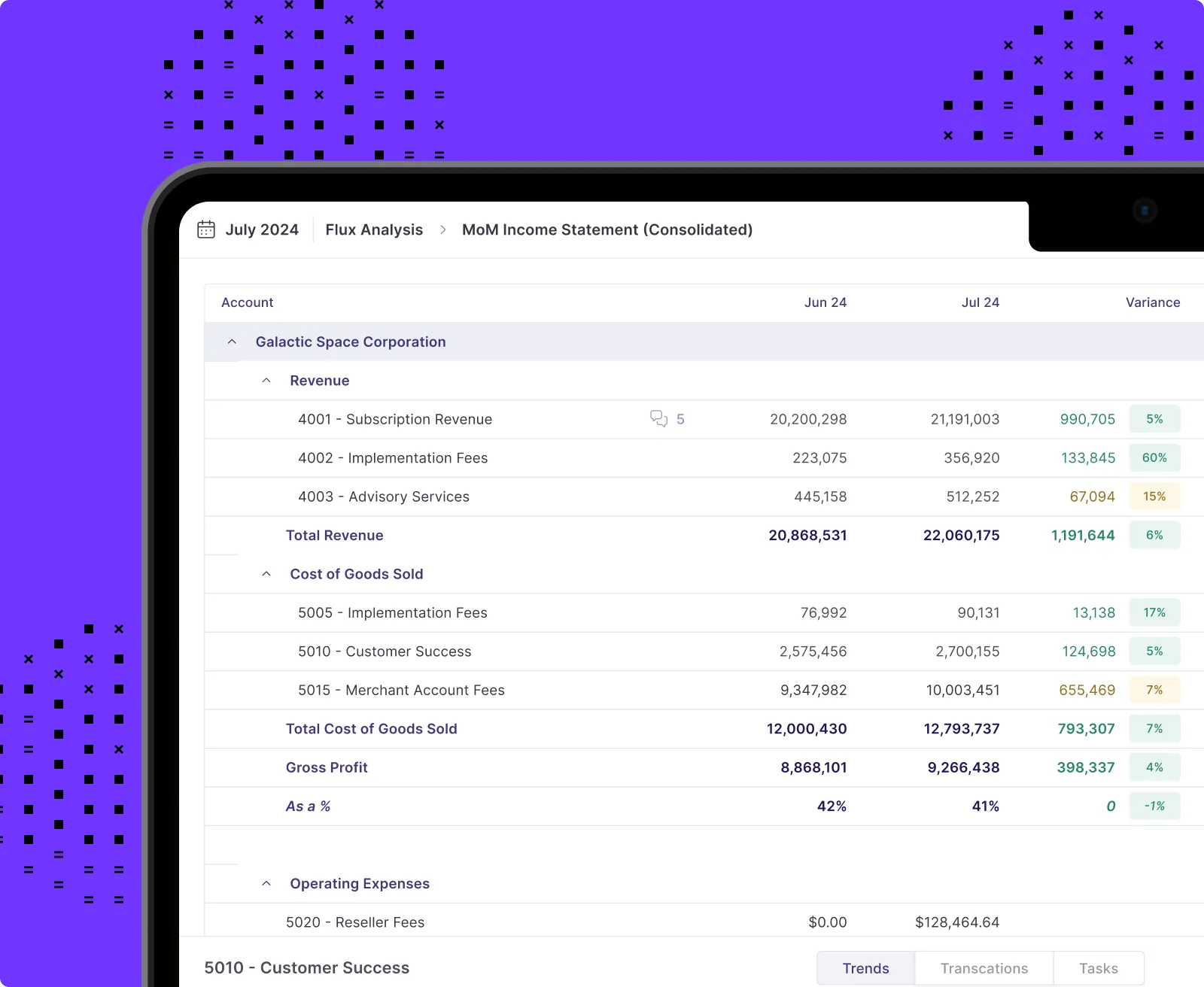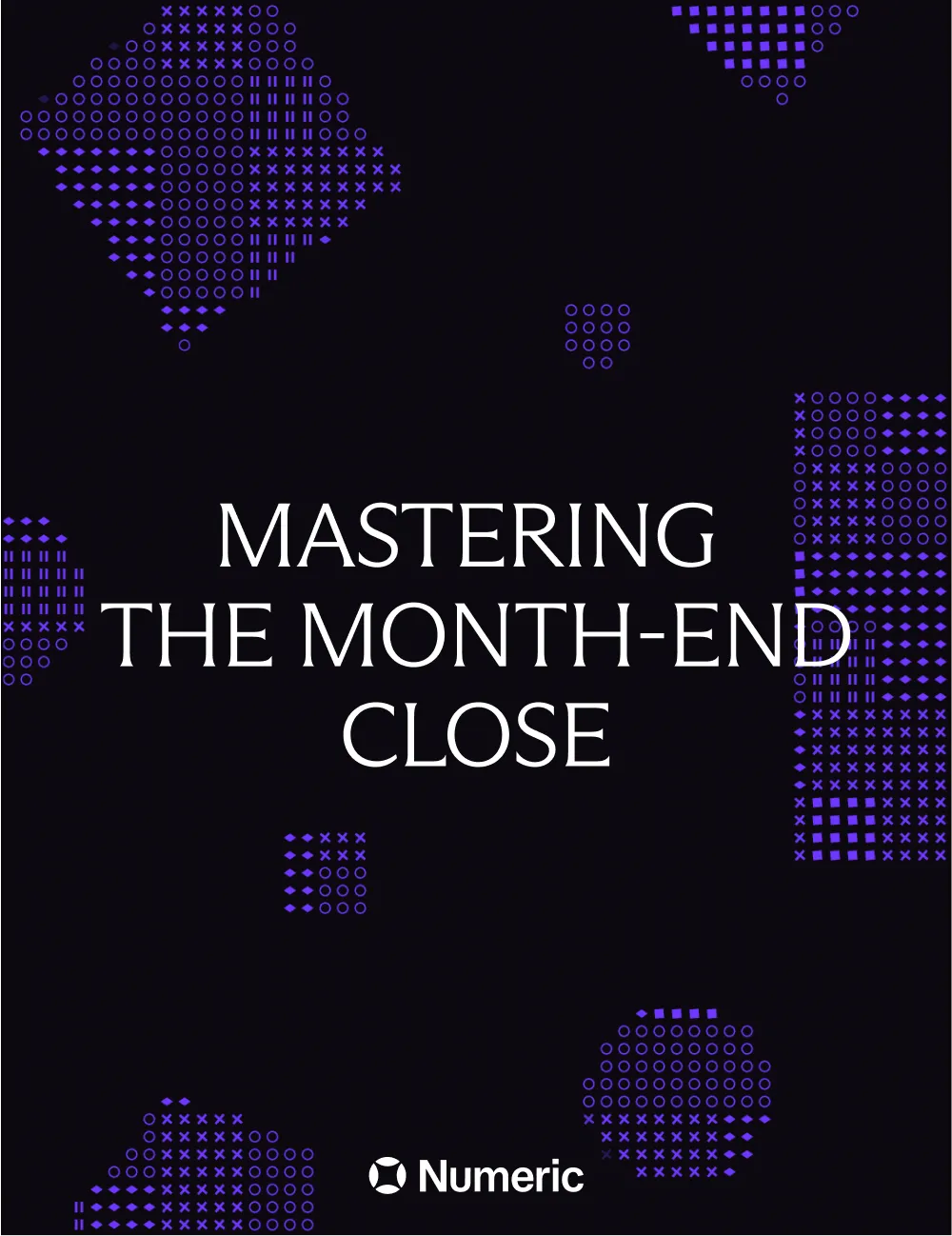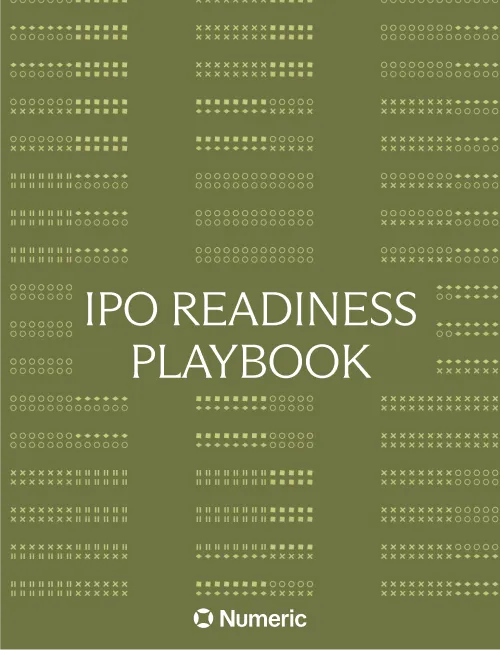Billion Dollar Balance Sheets: Lessons from Meta and Snowflake's Enterprise Accounting Operations
.webp)
For finance teams at high-growth or enterprise companies, a critical tension exists: how do you maintain necessary accounting rigor while staying nimble enough to support rapid business evolution? As transactions scale from thousands to billions, how do you build systems that might bend but don't break?
If you’ve ever wondered how SaaS giants manage their accruals or how “Big 6” companies deal with unbelievably robust revenue calculations, then stay tuned. To answer these questions, we spoke with two Solutions Managers from Numeric who previously served as revenue accountants at public tech companies: Ben Sheridan, formerly of Snowflake, and Adam Heeger, who worked at Meta.
Their experiences reveal how accounting excellence can enable—rather than hinder—a company's growth trajectory.
When Billions of Transactions Test Your Accounting Infrastructure
Both Heeger and Sheridan can attest to the fact that enterprise-level accounting brings on infrastructure and computational challenges that are rarely seen at lower levels.
Given Heeger’s experience at Meta —one of the largest companies in the world by nearly any metric — it shouldn’t come as a surprise that accounting had a front-row seat in observing the scale of the company’s operations.
Adam explains: “The things that kept us up at night were how seemingly small changes to contracts, code or customer behaviours, could have outsized impact.”
Meta’s revenue teams were tasked with determining exactly when to recognize revenue for billions of daily ads transactions across all time zones, with countless edge cases — like a user on a flight crossing time zones who was not connected to the internet at the time they viewed an ad — that had to be handled perfectly to ensure accurate financial statements. Enough complexity for one account, let alone three billion.
Meta's massive infrastructure investment also created accounting challenges most companies never encounter. "They have a huge infrastructure accounting team for all the data centers," Adam explains. "When you're at Meta’s scale and spending tens of billions per year, there's a lot of accounting to ensure you're paying suppliers right, getting invoices right, and tracking all these assets."
The scale is frequently mind-boggling. Adam describes how a single accounting policy decision—extending the useful life of assets by six months—saved "several billion dollars a year in depreciation expense." These aren't just accounting decisions; they're strategic business decisions with enormous financial impact.
Unlike smaller tech firms that simply expense their AWS bill, Meta's accounting team manages a physical infrastructure footprint spanning continents, including:
- Hundreds of thousands of servers and hard drives
- Specialized fiber optic cables
- Undersea cable investments
- Data centers in multiple countries with different regulatory requirements
This scale requires specialized accounting talent and custom systems that can handle the volume and complexity of transactions while maintaining compliance.
The Documentation Burden That Transforms Public Companies
For Snowflake, the challenges were different but equally complex. As the company prepared for IPO while scaling to over a billion dollars in revenue, its accounting function had to evolve from a small team to a sophisticated operation with specialized units for revenue, GL, equity, and tax—all while maintaining the agility needed to support rapid business growth.
One of the most striking contrasts between private and public company accounting is documentation rigor. While the underlying accounting work may be similar, the level of detail and structure in documentation creates an entirely different working environment.
Ben Sheridan recalls how at Snowflake, even for processes with immaterial financial impact, public company standards required meticulous documentation: "It basically has to get to a point where not only does it need to be correct, it needs to be very easily provably correct when looked at by someone who's never done it before."
This meant creating detailed checklists, screenshots of reports with record counts tied to Excel downloads, extensive narratives explaining balance flows, and multiple layers of review—all for processes that might have been done with minimal documentation pre-IPO.
The shift isn't just about adding paperwork. It fundamentally changes how accounting teams approach their work. Processes that functioned adequately at smaller scale suddenly require extensive redesign not because the numbers were wrong, but because the evidence and transparency around the work wasn't sufficient.
Build vs. Buy: The Strategic System Decisions That Shape Finance Teams
When your company processes billions of transactions daily, off-the-shelf solutions often can't keep up. Adam revealed a surprising fact about Meta: "Much of our accounting software — actually much of our business software, period — was built internally. Our close platform tool had all been built by Meta engineers; we didn't use BlackLine or Numeric. It was all in-house."
This wasn't just about scale—it was about flexibility and control. "We had to iterate faster than vendors could support us," he explains. Meta's preference for internal development extended across its accounting operations, from revenue recognition to financial reporting.
Ben's team at Snowflake had a balance of internal tooling & external software. His work with both internal and external accounting systems provided valuable context for companies in similar situations: "Decisions about your accounting systems matter long-term. If you pick the wrong system early, you end up ripping it out and doing a challenging implementation and huge data conversion several years from now—right when you're in the midst of trying to raise additional funding and scale and grow."
These build-vs-buy decisions are strategic, not just operational. The right choice depends on a company's growth trajectory, technical capabilities, and resource constraints—but the consequences of these early decisions can reverberate for years.
The Three Breeds of Finance Talent: Why Your Career Path Matters
Both Ben and Adam identified a fascinating pattern in finance team evolution: different company stages require fundamentally different types of accounting professionals. This creates both challenges and opportunities for finance leaders and individual contributors.
The Startup Specialists
- Thrive with flexibility and rapid change
- Excel at building processes from scratch
- Can work across multiple accounting domains simultaneously
- Focus on operational efficiency over perfect documentation
- Value mobility and quick solutions
"These are people who love working in ambiguous situations where you have to take functions from zero to one," Ben explains. "They are not interested in coming into a rigidly defined role."
The Pre-IPO Veterans
- Specialize in transitioning companies to public status
- Deep expertise in SOX implementation
- Can bridge private to public operations
- Balance documentation needs with business agility
- Expertise in audit preparation and remediation
"I've met people who are just trying to do an IPO every four years," Ben notes. These specialists thrive in the transitional phase between private and public.
The Public Company Professionals
- Prefer established processes and controls
- Excel at optimization within compliance frameworks
- Strong documentation and review skills
- Deep technical expertise in specific domains
- Focus on incremental improvements to existing systems
"They're great administrators, very detail oriented," Ben observes. "They will never miss a beat. But they don't always want to be inventive or define processes. Some people want to work in a defined process and do it perfectly."
This isn't just about personal preference—it's about expertise and career opportunities. "If you don't figure out how to do SOX and work at a public company, it is really challenging to know how to scale a pre-IPO business to IPO readiness. Most pre-IPO veterans do also have public company experience," Ben states.
The hiring implications are significant. When considering promotions, Ben notes that SOX expertise at a more advanced stage can be critical: "If I have two senior analysts that I'm considering for promotion to manager, and one of them is a SOX Rockstar but maybe weaker on operations, and the other is really good at ops but terrible at SOX... I might lean towards the SOX person because they have a better understanding of where we need to go, and can help direct the operational person to meet those needs."
The "holy grail," as Ben puts it, is finding professionals who understand both worlds and can build appropriately scaled systems. These rare individuals can implement processes that work for a company's current stage while anticipating future needs.

Turning Auditors Into Strategic Allies
Both Ben and Adam highlighted the importance of building strong relationships with internal audit teams as a strategic buffer and preparation for external audit scrutiny. This goes far beyond simple compliance—it's about creating a collaborative approach to risk management.
"Internal audit had their own testing approach," Ben explains. "They would also discuss control readiness with us. They were a point of contact as processes/accounts moved into SOX scope, and we would align on timing and requirements for areas which we anticipated would come under their review in the future.This proactive approach allowed Snowflake to address potential control issues before they became problems during external audits.
At Meta, the relationship with auditors focused heavily on IT controls due to their heavily automated processes. "From our auditor's perspective, the underlying accounting on the revenue side was always more straightforward than many clients," Adam explains. "But they needed to verify all the code for the monitoring alerts and other systems to ensure everything was working as intended."
Building these strategic partnerships requires:
- Regular, transparent communication with both internal and external audit teams
- Early involvement of audit in new process development
- Proactive identification and remediation of control weaknesses
- Balancing audit requirements with business needs
- Ensuring audit teams understand the business model and key risks
The Path to Post-IPO Steady State
How long does it take for accounting operations to stabilize after an IPO? "About two and a half to three years," according to Ben. But stability doesn't mean static—it means resilience.
"We were in this period post-IPO where it was the hardest I've ever worked. The journey included system implementations, offshore expansion, and constant process refinement. Only after addressing these challenges did Snowflake achieve "a significant degree of stability" with "SOX-compliant processes that worked with our scale and could accommodate growth."
But even then, new challenges continued to emerge. "Things will shake stability up," Ben notes. "New product releases, accounting policy changes, new entities with their own challenges—these are going to be smaller changes than completely overhauling how you book revenue, but it's never going to be perfectly flat line."
The goal isn't to eliminate change but to build systems and teams that are adaptable to the inevitable trip-ups on the way.
Five Practical Strategies for Finance Leaders at Growing Companies
Based on the experiences shared by Ben and Adam, here are key strategies finance leaders can implement to maintain both rigor and agility as they scale:
1. Document with future compliance in mind
Even pre-IPO, design documentation that could satisfy SOX requirements. Ben advises: "Pre-IPO, we were still doing similar types of projects, and we were far enough along that we were doing it with an eye to SOX anyway. But it became iron-clad post-IPO."
Action steps:
- Create detailed work paper templates with sign-off sections
- Maintain screenshots and evidence for key reports
- Document process flows and control points
- Establish review procedures for all significant journal entries
- Build checklists that ensure consistency across team members
2. Strategically approach the build vs. buy decision
Evaluate whether to build custom solutions or purchase existing tools based on your specific needs and growth trajectory. Meta chose to build in-house solutions for scale and flexibility, but this approach requires significant engineering resources.
Action steps:
- Assess the scalability of potential systems against projected growth
- Consider compliance requirements in system architecture
- Evaluate customization capabilities against unique business needs
- Plan for integration requirements with other systems
- Factor in the total cost of ownership, including maintenance
3. Hire and develop talent aligned with your company stage
Recognize that different growth phases require different accounting skill sets, and plan your hiring and development accordingly.
Action steps:
- Assess whether candidates fit your current stage and future needs
- Look for adaptability and learning capacity alongside technical skills
- Create training programs to develop SOX expertise internally
- Consider how roles will evolve as the company matures
- Build diverse teams that include startup, IPO, and public company experience
4. Create strategic partnerships with audit teams
Treat internal audit as a collaborative partner rather than an adversary, using their expertise to strengthen controls.
Action steps:
- Involve internal audit early in process development
- Establish regular check-ins about control effectiveness
- Use internal audit's feedback to refine documentation
- Create remediation plans for identified weaknesses
- Establish clear communication channels for audit requests
5. Embed finance in business communication channels
Develop systematic ways to stay informed about business changes rather than relying on individual relationships, especially as the company scales.
Action steps:
- Assign finance partners to key business teams
- Establish regular cross-functional meetings for updates
- Create clear processes for finance review of new initiatives
- Develop automated alerts for business changes that affect accounting
- Build relationships with product and sales leadership
Lessons Learned
By investing in scalable systems, developing the right talent, building strategic audit partnerships, and maintaining strong business communication, finance teams can support innovation while protecting the business—becoming enablers rather than bottlenecks in the growth journey.
As Adam and Ben's experiences at Meta and Snowflake demonstrate, the path isn't always smooth, but with thoughtful planning and the right approach, accounting can become a strategic advantage rather than a limitation—no matter how large the company grows.



















.png)
.png)
.png)